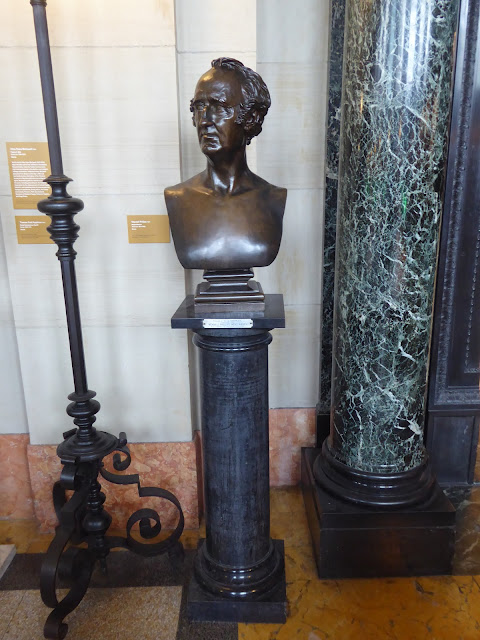Oliver Wendell Holmes, Sr.
Boston, MA
N 42° 20.974 W 071° 04.644
Short Description:
A bronze bust of poet, physician, and author Oliver Wendell Holmes, Sr. is located in the Bates Reading Room of the McKim Building of the Boston Public Library at 700 Boylston St., Boston,
Long Description:
The life-size bronze bust of Oliver Wendell Holmes, Sr. depicts Holmes from the mid-chest up. He is wearing a bow tie, vest and suit jacket. The bust rests on a 4' high black pedestal. A metal sign attached to the top of the pedestal is inscribed:
OLIVER WENDELL HOLMES
1809 - 1894
BY RICHARD EDWIN BROOKS
PLACED IN THE LIBRARY BY THE CITY COUNCIL OF THE CITY OF BOSTON
Oliver Wendell Holmes, Sr. was a polymath. He was a poet, novelist, biographer, essayist, and a physician. Born on August 29, 1809 in Cambridge, MA, he graduated from the Phillips Academy, Harvard College, and Harvard Medical School. He wrote poetry at an early age and his most famous poem "Old Ironsides" was published when he was only 21, in 1830. The poem was influential is the saving of the USS Constitution, now the oldest commissioned ship in the world.
Holmes, along with Henry Wadsworth Longfellow, William Cullen Bryant, John Greenleaf Whittier, and James Russell Lowell were members of the Fireside Poets. A group of American poets whose works rivaled those of English poets. He often published his works in The Atlantic Monthly.
Poetry:
Old Ironsides
The Chambered Nautilus
"Songs in Many Keys
Poems
Medical and psychological studies:
Puerperal Fever as a Private Pestilence
Mechanism in Thought and Morals
Table-talk books:
The Autocrat of the Breakfast-Table
The Professor at the Breakfast-Table
The Poet at the Breakfast-Table
Over the Teacups
Novels:
Elsie Venner
The Guardian Angel
A Mortal Antipathy
Articles:
"The Stereoscope and the Stereograph", The Atlantic Monthly, volume 6 (1859)
"Sun-painting and sun-sculpture", The Atlantic Monthly, volume 8 (July 1861)
"Doings of the sun-beam", The Atlantic Monthly, volume 12 (July 1863)
Biographies and travelogue:
John Lothrop Motley, A Memoir
Ralph Waldo Emerson
Our Hundred Days in Europe






















